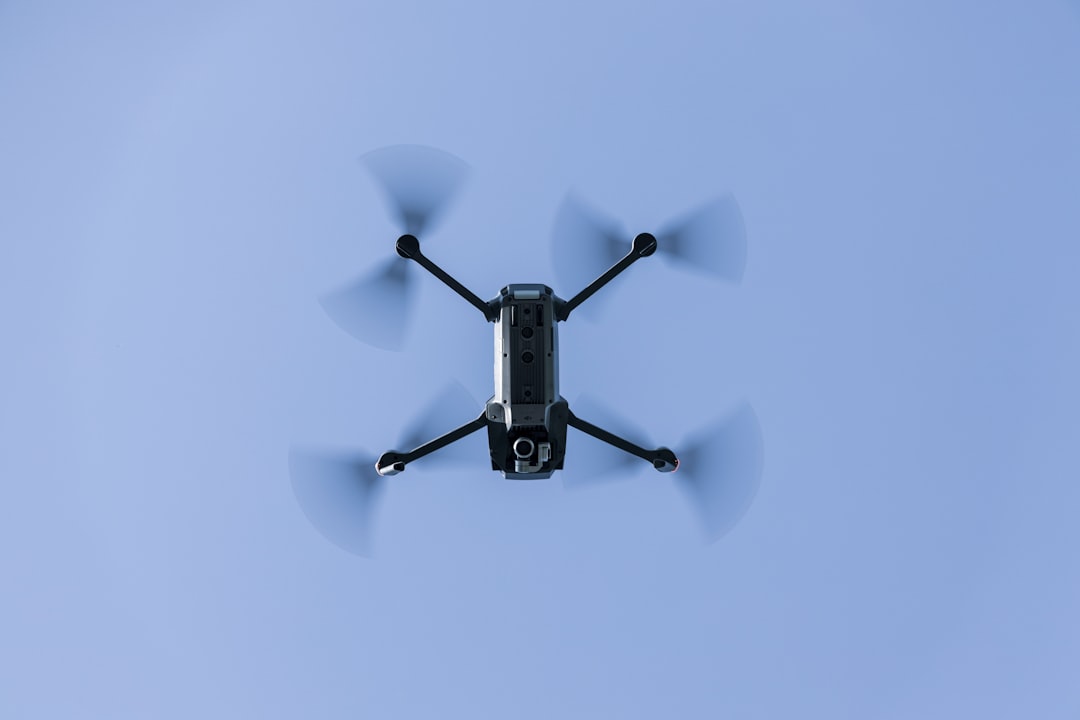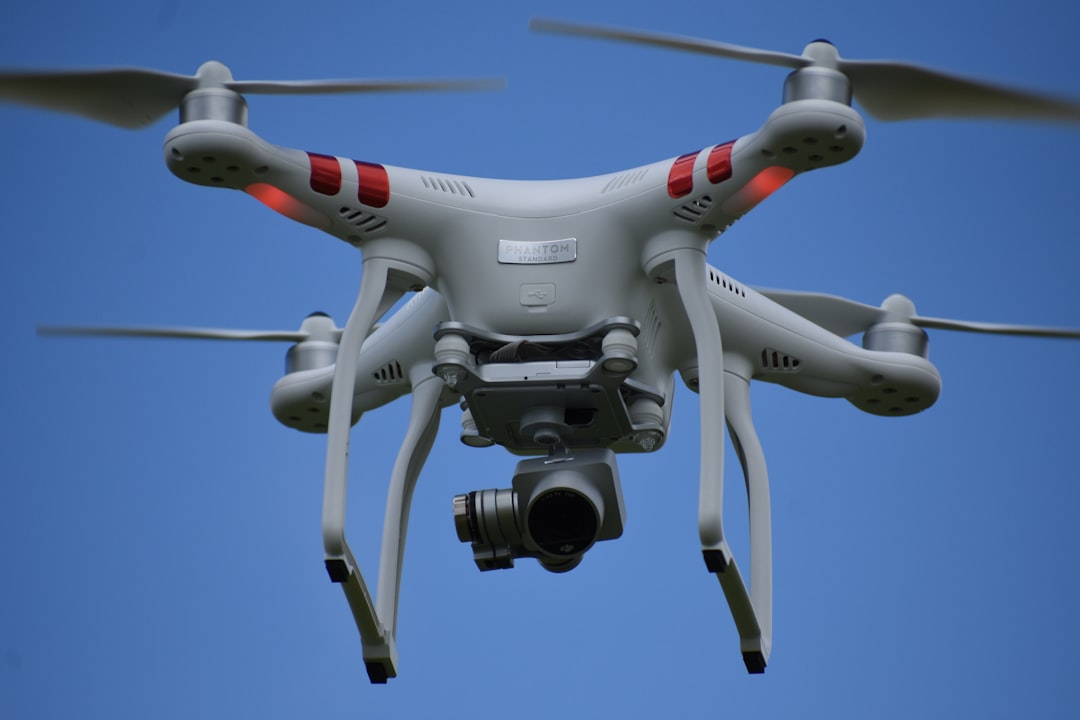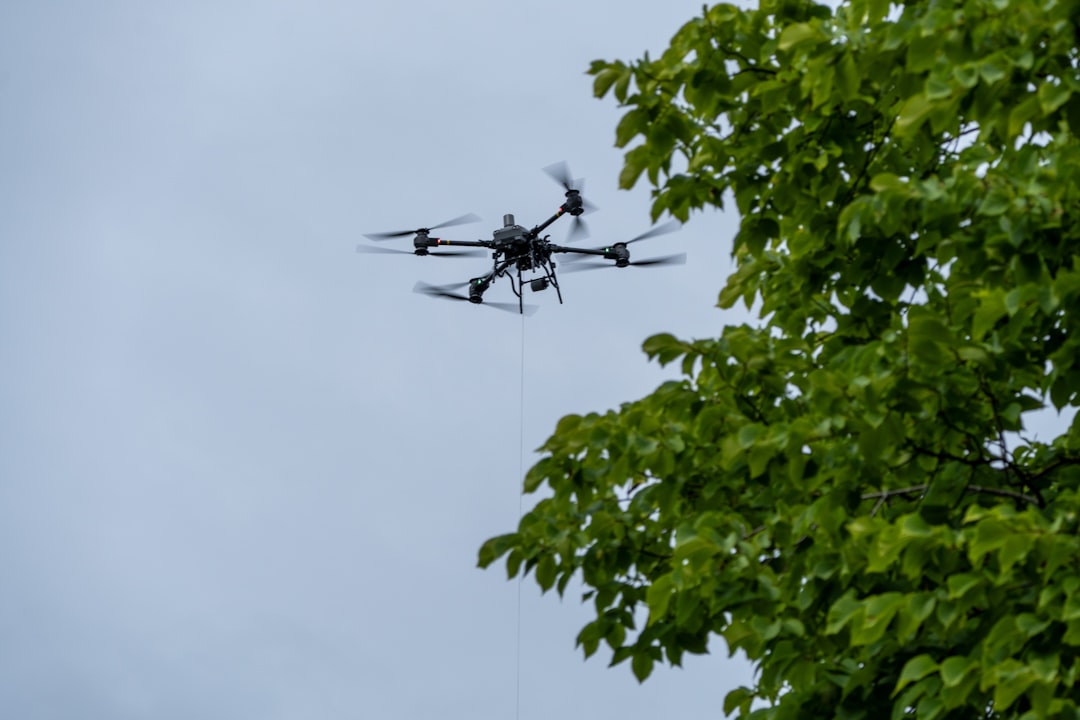

Engage prospects with a scan and streamline customer engagement with FREE QR code marketing tools by Sona – no strings attached!
Create a Free QR CodeFree consultation

No commitment

Engage prospects with a scan and streamline customer engagement with FREE QR code marketing tools by Sona – no strings attached!
Create a Free QR CodeFree consultation

No commitment
Aerial application services are transforming how organizations achieve results in agriculture, real estate, and experiential marketing. As the physical and digital worlds increasingly intersect through drone technology and advanced manned aircraft, many marketers and operational leaders still struggle to capture, identify, and convert high-value audience engagement. The key friction point is that interactions often happen in fast-moving, distributed environments where traditional data capture methods break down.
A core challenge is missed opportunities when prospects interact with aerial touchpoints but are not tracked, resulting in high-intent leads that remain unknown or late to enter the pipeline. Printed brochures, manual form fills at events, or phone sign-ups fragment the customer journey and fail to reveal which prospects have buying intent or when their interest peaks. QR codes solve this by enabling direct, trackable transitions from field interactions to digital conversion points that are easy to measure and optimize.
QR codes have emerged as a measurable, strategic solution for bridging these gaps. Rather than relying on incomplete analog workflows, QR codes create a direct, frictionless path from offline impressions to digital destinations. This shift moves lead capture from passive to proactive: engagement is instantly recorded, attribution is automated, and decision-makers move from unknowns to actionable leads in real time. With the right platform and plan, aerial service operators can modernize customer experiences, reduce operational waste, and prove impact across every campaign.

QR codes bridge persistent physical-to-digital gaps in aerial application services by eliminating friction, unlocking intent signals, and proactively surfacing and engaging prospects who would otherwise stay anonymous. In practice, this means every banner, banner example, aircraft decal, field sign, or demo becomes a gateway to an owned digital experience where lead capture, qualification, and follow-up can happen at the speed of interest.
Start by assessing where analog processes still control the first interaction. Replace printed brochures that go home in a pocket and never get tracked with QR codes that open a tailored landing page. Retire manual event sign-up sheets that are hard to read and slow to input; use QR registration with auto-fill and immediate confirmations. Trade phone hotlines that are busy after aerial demonstrations for scan-to-booking flows with time windows and calendar sync. These updates compress the time between attention and action while ensuring every action is recorded.
By embedding QR-enabled touchpoints across every channel, aerial service operators can automate offline lead capture, quickly qualify prospects, and prioritize those with immediate intent. The result is fewer lost opportunities, faster response times, and a stronger connection between field impressions and revenue. Platforms like Sona QR simplify this transition with dynamic codes, centralized analytics, and CRM integrations that make each scan count.

Modern aerial application services experience blind spots when prospect engagement happens outside traditional digital funnels. Field days, equipment demos, flyover banners, and roadside signage generate interest in motion; without a way to capture that interest in real time, teams are left to guess who engaged and what they want. This undermines sales efficiency, inflates cost per acquisition, and allows competitors to convert motivated buyers first.
QR codes address these gaps by transforming any physical surface into a digital access point. In agriculture, a code on a spray notification board can deliver compliance documents, pricing, and request forms—see EPA guidance for best practices. In real estate, a code on a listing sign can route to aerial footage or a booking page for property tours. At events, QR-enabled badges or booth displays can log attendance and trigger personalized follow-up. The power lies in combining instant action, measurable engagement, and flexible content updates that keep every activation current.
With QR code adoption, aerial application services turn anonymous engagement into measured, attributed, and actionable leads. Each scan becomes a signal to prioritize outreach, enrich audience profiles, and allocate budget toward what works.

There is no one-size-fits-all solution for capturing engagement in aerial application services. Codes work best when the format matches the intent and location of the interaction. A drone demo at a trade show calls for instant booking; a service vehicle decal may be better suited to contact exchange; a compliance notice might require a PDF download. Choosing the right format ensures the shortest path from scan to value while giving you the data you need.
The most effective strategies combine several formats within a single campaign. For instance, a farm field day could use a landing page link for registration, a form for service requests, and a media download for comparison charts. By pairing each physical placement with the optimal digital action, you reduce friction and capture richer context.
With a platform like Sona QR, you can generate all these formats, switch destinations on the fly, and manage them centrally. Dynamic codes are recommended for any campaign where you want trackability and the ability to iterate without reprinting; static codes are acceptable for evergreen resources like safety manuals.

High-value engagement is often lost when organizations cannot identify or pursue anonymous traffic at the edges of their operations. The aerial application landscape includes many moments where interest is high but conversion is hard: moving audiences, outdoor environments, and time-sensitive offers. By mapping these friction points, you can place QR codes where they will have the highest impact and the clearest measurement.
Look across marketing and operations to identify surfaces that already attract attention. Start with events and demos, then expand to field infrastructure, rolling stock, and localized advertising. Add unique QR codes to each asset so you can evaluate performance and rebalance investment toward the best producers.
Strategic QR placement closes tracking blind spots that previously hindered attribution and follow-up. The more you tailor code destinations to the context of each touchpoint, the higher the conversion and the clearer the signal you will capture for sales and service teams.

Anonymous prospects and missed touchpoints frustrate aerial application teams, especially when timing is critical. QR-enabled workflows improve outcomes by capturing intent at the source and delivering the next best action without delay. The following use cases align with common interactions and can be deployed quickly.
Each use case should be instrumented with unique codes, clear calls to action, and integrated conversion paths. Add simple incentives where appropriate, such as priority scheduling or access to premium footage, to increase scan rates.
With each use case, QR technology reduces lost opportunities, enhances data capture, and speeds targeted follow-up. Dynamic codes ensure you can iterate destinations and messaging as seasons change or new campaigns launch.
Each QR scan is a high-signal event that reveals context, interest, and urgency. By placing unique codes across the journey and tagging them by use case, you can create precise segments for retargeting and nurture without guesswork. This turns offline interactions into digital audiences that can be engaged via email, SMS, and paid media. Sona is an AI-powered marketing platform that identifies visitors, unifies attribution with activation, and syncs audiences across ad platforms—learn more at Sona.
The key is to match scan destinations and fields to the information you need to personalize follow-up. Use a light touch to encourage action while collecting enough detail to route leads appropriately. Always disclose how data will be used and offer value in return, such as priority service windows or exclusive footage. For deeper context on intent, see this intent data guide.
With Sona QR, each code becomes a smart entry point into your funnel. You can enrich records with campaign tags, pass data to your marketing automation tools, and activate retargeting based on real behavior rather than assumptions. For execution, use the retargeting playbook.
QR codes are connectors that unify offline and digital campaigns. When you add them to field assets, print collateral, and event setups, you gain a complete view of engagement and the ability to steer prospects toward the next step. This connected approach is especially valuable in aerial application services where many touchpoints occur away from a desk and at unpredictable moments.
Integration should be intentional. Assign codes to specific campaigns and placements, tag them with UTM parameters, and link them to destinations designed for conversion on mobile devices. Build a reporting framework that rolls up scan data by channel and asset so you can compare performance objectively and optimize your mix. For modeling, review offline attribution.
QR codes serve as the offline onramp to your digital marketing engine. With a centralized platform like Sona QR, you can manage codes at scale, monitor performance across channels, and sync scan activity with your CRM and ad platforms. This gives aerial teams a continuous line of sight from first touch to revenue.
Launching a QR-powered initiative in aerial application services does not require a complete overhaul. Begin with a single high-impact use case, validate your assumptions, and expand as you gather performance data. Make scannability and mobile-first experiences your guiding principles since most interactions will happen outdoors or on the move.
Use the following workflow to plan, deploy, and optimize campaigns with clarity. Treat it as a repeatable system that standardizes execution and accelerates learning across teams and regions.
Clarify the business problem and the user action you want to drive. Common goals include converting demo interest into scheduled conversations, capturing aerial service requests at the field edge, or routing event traffic into segmented nurture tracks. The more specific your objective, the easier it is to design a code and destination that convert.
Select between static and dynamic codes based on your needs. Static codes are suited to evergreen resources that rarely change; dynamic codes allow you to update destinations, track scans, and personalize experiences without reprinting. In most growth-focused scenarios, dynamic is the better choice.
Code design is not just about aesthetics; it directly impacts scan rates and data quality. Make the code large enough for the distance, add a contrasting frame, and pair it with a concise, benefit-led call to action. Ensure the destination is fast, mobile optimized, and aligned with the promise in your CTA.
Roll out your codes to the placements most likely to reach high-intent audiences. Prioritize assets that already drive attention such as demo banners, site signage, aircraft or drone panels, and vehicle doors. Use unique codes for each placement so you can attribute performance and optimize.
Launch with analytics in place. Define success metrics such as scan volume by asset, scan-to-lead conversion, and time to first response. Review data weekly during the first month to spot quick wins and issues, then move to a steady cadence.
Aerial application providers often struggle to tie physical touchpoints to pipeline and revenue. Interactions occur across disconnected stages and media, which makes it hard to justify spend or double down on what works. QR codes change this equation by creating digital touchpoints that are inherently measurable and immediately actionable.
To move from engagement to impact, you need a clear analytics backbone. This includes per-code tracking, channel and placement tagging, and integration with CRM and marketing tools. The objective is not only to count scans but also to understand which behaviors drive meetings, proposals, and closed business.
With Sona QR and Sona.com, teams can connect scans to revenue via identity resolution, multi-touch attribution, and Buyer Journeys that unify fragmented touchpoints. Sona QR captures real-world engagement at the code level; Sona.com turns that engagement into insights that inform budget allocation and creative strategy. The result is a feedback loop where every scan informs smarter decisions and better results.
As you scale QR initiatives, a few best practices will help you sustain high scan rates and reliable attribution. Treat each asset as a testable channel, keep destinations focused on a single action, and automate follow-up so that prospects never wait for a response. Creativity in placement can also unlock new audiences while delivering measurable outcomes.
Choose the tactics that match your media mix and buyer journey. Aerial operations often rely on seasonal campaigns and time-locked service windows, so align your QR flows with those realities. Always pair codes with clear, benefit-driven CTAs that tell people exactly what they get for scanning.
By embedding these practices, aerial service teams build a durable system for demand capture and attribution. You can generate and track your first QR codes for free with Sona QR, then expand with integrations and automation as you prove value. Start creating QR codes for free.
For aerial application services, the longstanding challenge of not knowing which offline interactions are worth pursuing, or how to prove campaign ROI, has slowed marketing momentum and constrained growth. QR technology changes this by making every physical surface a doorway to a measurable digital experience. From demo banners and field signs to vehicle decals and direct mail, codes shorten the distance between attention and action while providing the data needed to prioritize outreach.
Whether your priority is refining drone-driven marketing, streamlining on-field service sign-up, or boosting conversions on property showcases, QR solutions ensure every moment of attention becomes a micro-conversion that compounds. With the right strategy and a platform like Sona QR, teams can capture demand at the source, enrich buyer profiles in real time, and connect scans to revenue. The result is more engaged prospects, more efficient operations, and a continuous cycle of learning that fuels innovation and sustained growth in aerial application services.
QR codes have revolutionized aerial application services by transforming traditional operations into efficient, data-driven workflows. Whether it’s streamlining access to critical flight information, enhancing communication with clients, or ensuring compliance with safety protocols, QR codes replace cumbersome manual processes with instant, mobile-friendly solutions that capture real-time engagement and operational data.
Imagine instantly providing pilots and clients with up-to-date application maps, safety checklists, or service confirmations—all accessible through a simple scan. With Sona QR, you can create dynamic, trackable QR codes in seconds, update information on the fly without reprinting, and link every scan to actionable insights that improve service delivery and client satisfaction. No more delays, no missed details—just smarter, safer aerial application services.
Start for free with Sona QR today and elevate every scan into a seamless connection, a verified action, or a trusted partnership.
Aerial application services are used for agriculture compliance and service requests, real estate marketing with aerial footage and property tours, event activations, experiential marketing with drone demos and banners, and direct mail campaigns with personalized QR codes.
They enhance agriculture by providing spray notifications, compliance documentation, service request forms, and real-time lead capture at field days, improving operational efficiency and reducing missed opportunities.
Drones enable large, high-contrast QR code displays visible from the ground, generate measurable engagement through scans, deliver dynamic content, and convert anonymous interactions into actionable leads.
They use QR codes on listing signs and brochures to provide aerial footage, floor plans, and booking forms for property tours, improving buyer qualification and tracking engagement.
Safety measures include QR codes linking to operator certifications, safety videos, maintenance logs, and compliance documentation to increase transparency and trust with landowners and regulators.
QR codes create a direct, trackable path from offline impressions to digital destinations, enabling instant lead capture, automated attribution, and faster qualification of prospects.
Common formats include web links for landing pages, vCards for contact exchange, forms for service requests, media downloads, SMS or email pre-fills, and app download links.
By using dynamic QR codes with analytics to capture scan data like time, location, and device, integrating with CRM systems to track downstream actions, and attributing revenue to specific codes and placements.
Define the use case, choose the right QR code type, design and test for scannability, deploy to high-impact touchpoints with unique codes, and track, measure, and optimize campaigns based on data.
By creating unique QR codes for each journey stage, tagging audiences by service interest, tracking scan context, and syncing data into CRM and ad platforms for personalized follow-up and paid media targeting.
Use Sona QR's trackable codes to improve customer acquisition and engagement today.
Create Your FREE Trackable QR Code in SecondsJoin results-focused teams combining Sona Platform automation with advanced Google Ads strategies to scale lead generation

Connect your existing CRM

Free Account Enrichment

No setup fees
No commitment required

Free consultation

Get a custom Google Ads roadmap for your business






Launch campaigns that generate qualified leads in 30 days or less.
